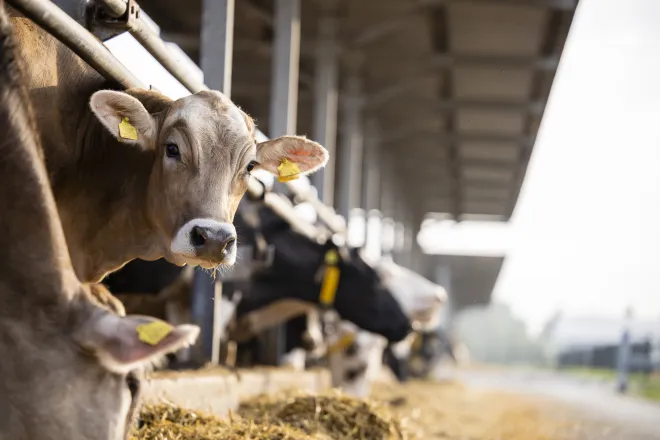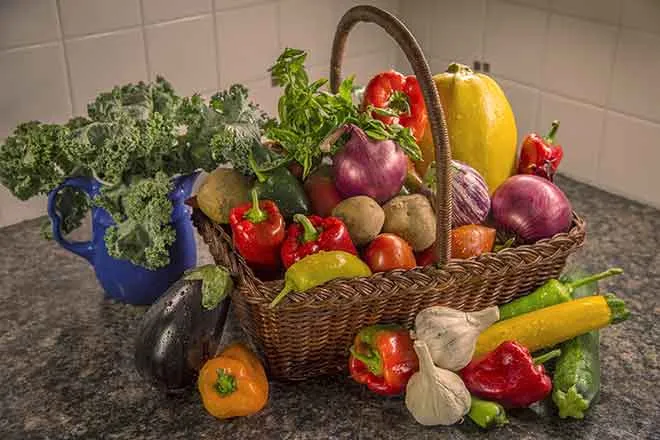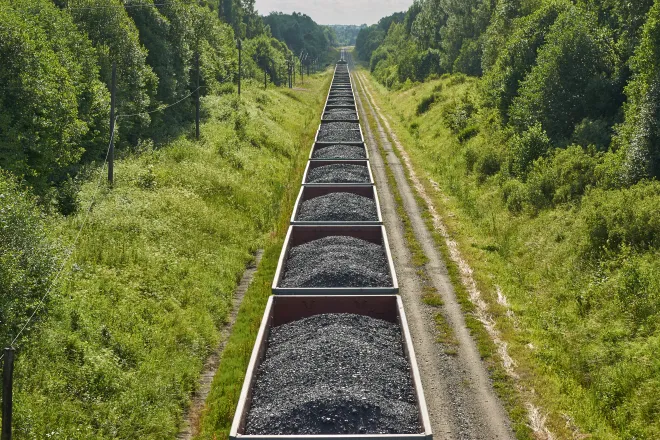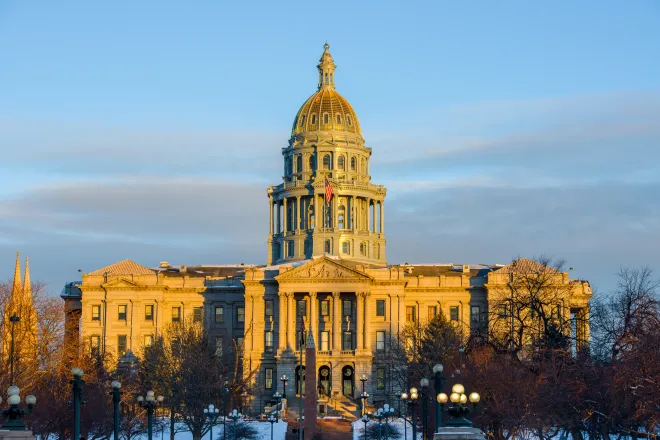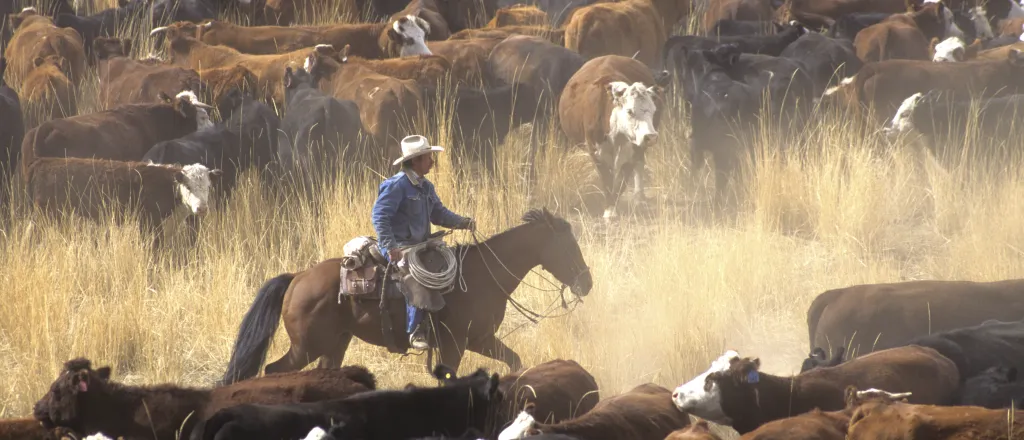
Transcript
[Music]
Welcome back to the Pasture to Profit podcast from Colorado State University Extension.
I am the Golden Plains Livestock Extension Specialist, Travis Taylor, out here in Wray, Colorado.
And I'm joined today by our 4-H and Livestock Specialist from Kit Carson County, Scott Stenett.
Scott, it's time of year where we see an increase in heat going on.
And when I think of heat, I think of trying to water livestock.
So, Scott, what are some of the things that we really need to know about how much water our cattle are consuming out here in the Golden Plains area?
Well, Travis, water consumption, as we all think back to kind of our basics of animal science, water is the most important nutrient for a multitude of reasons for our livestock.
And so we want to make sure that we're presenting them with plenty for them to intake.
But there's three big variables on how much water is going to be ingested and taken in by our cattle.
And the first thing is kind of the most obvious one.
It's going to be the cow size, the animal size.
So we've got big cows that, you know, our average cows now are getting much larger than they were 20 years ago.
You know, we're averaging 12 to 13, maybe 1400 pounds on an average size cow.
And some of these cows are 15, 16, 17, 1800 pounds now as well.
So the big thing we want to think about is making sure we have enough water for those cows, especially if they're lactating.
So their size and their stage and development.
So lactating cows require a little bit more water than just open or bred cows may need.
But they may also have calves at their side.
And even though calves get the majority of their fluid intake from the milk, they still need a good drink of water.
So those little calves and those cows combined, we've got to kind of think about those things together so that cow size and and calf size as well goes in there.
But then we follow right along behind that with needing to understand what the average ambient temperature is going to be.
So what's our what's our weather forecast going to be?
You know, we just saw a day the other day that we were in the upper 80s and cows are going to intake a lot more water on a day that's 80 degrees.
And on a day that's kind of our typical springs that we roll into at 65, 70 degrees.
You know, they're going to, you know, transpire in the evaporation through their breathing, you know, because our cows don't necessarily have slow glands.
So when it gets hot, we see them standing around with their mouth open.
We know what they're doing.
They're trying to cool off and they need more water that way.
But we can also see a little bit of water intake that comes from the forage that they're that they're ingesting.
So this time of year, if we get the right rains and maybe some leftover snowfall from time to time, we've got a good lush green pasture.
They're going to have some less dry matter and more of a wet matter intake.
And so sometimes that can help supplement their their needs for water.
So our good kind of rule of thumb.
Or, you know, summertime here in the high plains is we like to see cows take in about two gallons of water for every 100 pounds of body weight.
So if you think about your cow herd, if you've got a cow that's kind of a medium frame, you know, about twelve hundred pound average weights on those cows, they're going to need about 24 gallons of water a day.
If you've got those larger frame cows that are weighing around 1500 pounds, they're going to need or 30 gallons of water every day.
And we base this off of some research that we found that, you know, we go back to 40 degrees kind of being the nice constant temperature for a cow that the body heat that she can produce, it keeps her at a certain level and her water intake is going to be pretty consistent.
And that can be, you know, a nice dry cow at 40 degrees and, you know, late winter, you know, she's going to only take in maybe six and a half to up to eight gallons of water a day.
But then we see when we get into that summertime, how much more it increases.
You know, we're almost tripling water intake for 85 to 90 degree day.
Well, Scott, when you talk about that, can you relate to maybe what kind of tank size we would need for a standard group of cows or how big should our tank be if we've got cows and calves at their side?
Well, our tank needs to be able to, you know, provide enough water for our animals, depending on where they are in the pasture.
A lot of our pastures out here in eastern Colorado may have multiple sites for them to go to water just because of the size.
You know, we can be in the several thousands of acres and some of our pastures and, you know, that can be quite a big walk between water.
So we have to provide more.
And depending on how our cows decide to spread out on those pastures, they may all be going to the same water, watering place where they may go to multiple watering places.
But what we need to think about is, can we provide enough in the tanks that we have out there?
Can we provide enough when they come to drink and they drain it down a little bit?
When they come back again, will it also be refilled?
So, first of all, let's talk about tank size.
So tank capacity is based on some good old geometry from back when we were in, you know, I think I had geometry in 10th grade.
Yeah, I think that's about the right time to...
Right.
You know, all those formulas that were cheved at us or, you know, maybe it was your physical science class there that freshman or sophomore year in high school where you're doing these volume calculations.
We need to use a formula to figure out if we have the volume available.
So the basic volume formula for figuring out how much water we have in a tank is we take good old pi, 3.14, and we're going to multiply that by the diameter of the tank squared.
And then we'll divide that number by four.
And finally, multiply it by the depth of the water in the tank.
And so if we keep everything in feet, we're going to come up with a cubic foot at the very end as far as our answer.
So, for example, it's pretty common to see some smaller pastures and around windmills, we may have a 12 foot diameter tank.
So if we have a 12 foot diameter tank, we square that, we get 144.
We multiply it by 3.14 and we come up with 552.16.
So we're going to divide that by four.
And then multiply it on most of these tanks, they have a depth of two feet.
And we come up with an answer of around 226 cubic feet of water.
So that's the volume of water.
So now we have cubic feet.
We've got to do a conversion.
And in our conversion, for each cubic foot, it equates to about 7.48 or seven and a half gallons of water.
So to finish everything up, if we've got our 12 foot round tank with 226 cubic feet times seven and a half, we're going to get approximately 1690, 91, 92 cubic gallons of water.
So 1600 gallons of water in a tank.
And, you know, we understand that we're not going to drain all of that at once.
These cows are not going to suck every little bit of every drop of water out of that.
But we need to think about is that enough for the multiple times they're going to come and drink.
So we may have some issues we need to think about is, is that tank that we put out there by the windmill, you know, five years ago, how much blow dirt and sand and other things have filled the bottom?
Is it truly two feet deep anymore?
Or is it one feet, 10 inches deep?
And we've lost a few cubic feet in that volume.
So it doesn't quite hold as much.
If we've got those bottomless tanks that are usually much larger, and they could be out there for 10, 15, 20 years, and they don't get drained because most of the time, if there was a drain plug, it'd probably be down in the concrete somewhere.
You know, how much dirt and other debris filled the bottom.
So taking an accurate measurement of the depth, you know, measure it multiple places is may require, you know, putting the old hip waders on and maybe walking through the middle and taking some measurements to see, you know, where we feel like we've hit the bottom.
So we understand exactly how much we've got.
Well, I think it's important, you know, we've kind of hit it, but it's not just about how much water they consume.
It has to do with water quality too.
So what are some things I know it always aggravates me when I come up to a tank in the middle of the summer that maybe the refill time, particularly windmill, maybe the wind hasn't blown.
And I've got cows standing, unfortunately, in a center of a tank, just because that's where they like to be.
So what are some things we can think about in terms of water quality?
Well, I think water quality starts probably back, maybe something we should have thought about in the fall after we were leaving those summer pastures.
You know, maybe clean those if they're a portable tank or a tank with a bottom in it.
You know, maybe what we needed to do was, you know, take them out, clean them and then get them flipped over so they don't refill with dirt and debris during the winter time when they're sitting there empty.
The other thing is it helps to get rid of some other things when you clean a tank really well, such as our algaes and our little weeds that like to sometimes grow and they literally just take up space in the tank and they will lower the capacity and the volume in that tank.
So getting them cleaned, preparing them for the next winter.
We can also do some things like we can add just a little bit of fluorox bleach to our tanks and sometimes that will help rid ourselves of some algae.
It'll change the pH in the water and not enough to affect the quality of the water that the cattle are going to drink, but it can affect the water enough that the algae do not want to grow there.
We see a few other things that that go on with cleaning tanks, you know, putting different types of straw in the tank to help prevent weed and algae growth.
But the big thing is, let's keep it clean.
Let's get rid of those things that we don't need to have in there like dirt and debris, possible seeds, anything else.
So if we start with a nice shiny tank, we're going to do really good.
Now, the bottomless tanks that are cemented and concrete, obviously we can't sit there and drain those necessarily, clean them out, flip them over for the winter.
But what can we do to winterize them?
Can we do some things to, you know, can we cover a tank?
You know, can we put a big tarp over the top of it, you know, and keep the dirt and debris and everything from blowing in it through the winter?
Can we use a sump pump, maybe clean out as much water as possible?
Then we're going to have to get in there with a shovel, a little bit of manual labor.
And, you know, can we dig back out till we get back down to the bottom?
And do we need to do other things that keep it clean, you know, such as, you know, putting railing systems to prevent cattle from actually entering into the tanks?
Because we know cattle walk through the pasture, they're going to walk through their own manure.
And then they're going to, some of those calves especially are notorious for jumping into the tank.
And we've got three or four calves having a pool party with dirty feet.
And so what did they just do to the quality of the water?
So doing lots of different things to help prevent the water quality from going down.
You can also do a quality test on your water.
You know, what is the water coming in?
Your county health department or other, the state health department, you can get kits to test water for possible contaminants.
And we can look at that as well if we're really concerned with the actual true chemical quality of our water.
Yeah, I think Scott, when we talk about nutrition, and you and I have spent a lot of times in dry years talking about nitrates, it's something to know because nitrates in water are more lethal than nitrates in feed.
So knowing where your baseline is is good.
And I guess the other thing I would add is sunlight is a powerful disinfectant.
So if we get those tanks clean, like you said, in the fall, we get some sun in those, it will disinfect a lot of things that we have to deal with.
So Scott, is there anything else that you would like to bring in on this water topic?
Well, I think the other thing we, and you touched on it a little bit, you know, the cows standing around the tank is water refill.
How quickly do our water sources refill so that cattle can come back?
Because on the hot days, they may come to that tank, you know, five, six times in a day.
Where on cooler summer days, it may just be three or four times they come to water.
So thinking about what's out there, obviously windmills, you know, the old traditional windmills, how fast the wind is blowing, you know, just enough to turn the brake on is what we'd really like to see where we're kind of going at that windmills.
Maximum pumping capacity, but they may only be able to provide three to four gallons per minute on refill.
And, you know, one cow can drink five gallons when she comes to the tank at one time.
And so if you've got 50 head coming up there, you know, how much water did we just lose?
And you've got a windmill that's turning, that's only going to put three gallons of water per minute back in there.
So it takes quite a while.
If we're on the electrical pumps or the solar pumps that are electric, you know, electric, but due to solar, you know, they may be able to refill at a much higher rate from, you know, four or five, even six gallons per minute, depending on how big of a well we have driven and how much electrical power we have to pump that water.
But even then, you know, at five gallons per minute, you know, a cow can drink five gallons in, you know, two or three minutes standing there at the tank.
And if we've got 50 of them around that tank, plus their calves, you know, we can really pull down that tank pretty fast and it may take quite a while for them to refill.
So we hope on days like that, when it's really hot, we're in those upper 90s, you know, pushing 100, that we've got enough available sources of water that maybe not all our cattle in that pasture come to the same tank.
Maybe they'll spread out so that our windmills or our pumps can refill those tanks at an appropriate level.
And if we're not seeing it, it may be time to call out our well specialist and, you know, let them, you know, maybe time to redrill the well, you know, open it back up, maybe go a little bit deeper, you know, so some things may need to be changed.
Well, Scott, that's a lot to take in on the subject of water.
Like you said, most important nutrient that we can have in our beef cattle production system.
So with that being said, I think we'll sign off on today's Pasture to Profit podcast, but if you have questions on water or any other topic that you'd like to see discussed here, you can contact Travis here at the Yuma County Extension Office at 970-332-4151.
Or Scott, how do I get ahold of you?
They can contact me at the Kit Carson County Office here at 719-346-5571.
And as always, we hope that you are listening to our podcast, but you can find it at pasture to profit.podbean.com.
Or we also like to keep the episodes listed on our Golden Plains Area website.
So go to Golden Plains Area Extension and on the top banner, if you'll look under programs, agriculture, and then click on livestock, it'll take you to our livestock page where those episodes are available.
We want to thank you for all joining in today and hope you continue to listen and tune in to our next Pasture to Profit podcast.
[Music]


